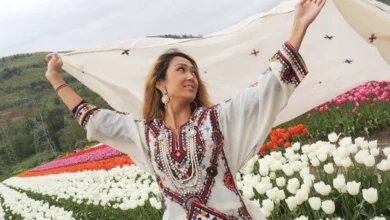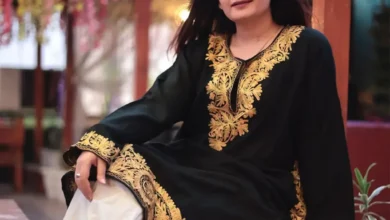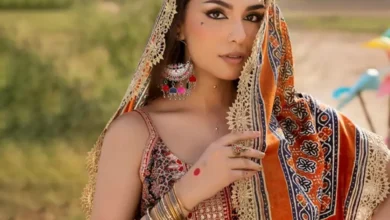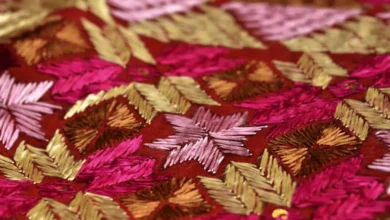Traditional Clothing of the Kalash People
The Kalash (also known as Kalasha or Kafir), an indigenous ethnic group of about 3,000–4,000 people, inhabit three remote valleys—Bumburet (Mumuret), Rumbur, and Birir—in the Chitral District of Khyber Pakhtunkhwa province, Pakistan, nestled in the Hindu Kush mountain range near the Afghanistan border.
Renowned for their animistic-polytheistic religion (one of the last non-Islamic communities in the region), vibrant festivals, and unique cultural practices, the Kalash maintain a distinct identity amid surrounding Muslim-majority populations. Their traditional clothing is a key symbol of this heritage, reflecting influences from ancient Indo-Aryan, Vedic, and possibly pre-Zoroastrian traditions, with legends linking them to Alexander the Great’s soldiers (though unproven).
Clothing emphasizes natural materials, intricate craftsmanship, and symbolic elements tied to nature, fertility, and spirituality. Women preserve these traditions more faithfully, while men have largely adopted regional attire. Fabrics like “shu” (locally woven wool or cotton) are central, often dyed naturally with walnut, pomegranate, turmeric, or henna for colors ranging from black to vibrant hues.
Materials and Craftsmanship
- Fabrics: Primarily handwoven wool from local sheep (sheared by hand, cleaned, spun on wooden spindles, and combed). Cotton is used for lighter garments. Shu, a coarse woolen cloth, forms the base for most items, sometimes blended with silk.
- Dyes and Embroidery: Natural dyes produce earthy tones; modern pieces incorporate synthetic neon threads for floral motifs. Embroidery features geometric patterns, cowrie shells, beads (coral, turquoise), buttons, and metal cowbells, symbolizing protection, fertility, and connection to nature.
- Weaving Process: Women spin yarn and weave at home, creating belts, robes, and accessories. This labor-intensive craft is passed down generations, though market access remains limited, prompting social enterprises to promote Kalash textiles globally.
Women’s Traditional Attire
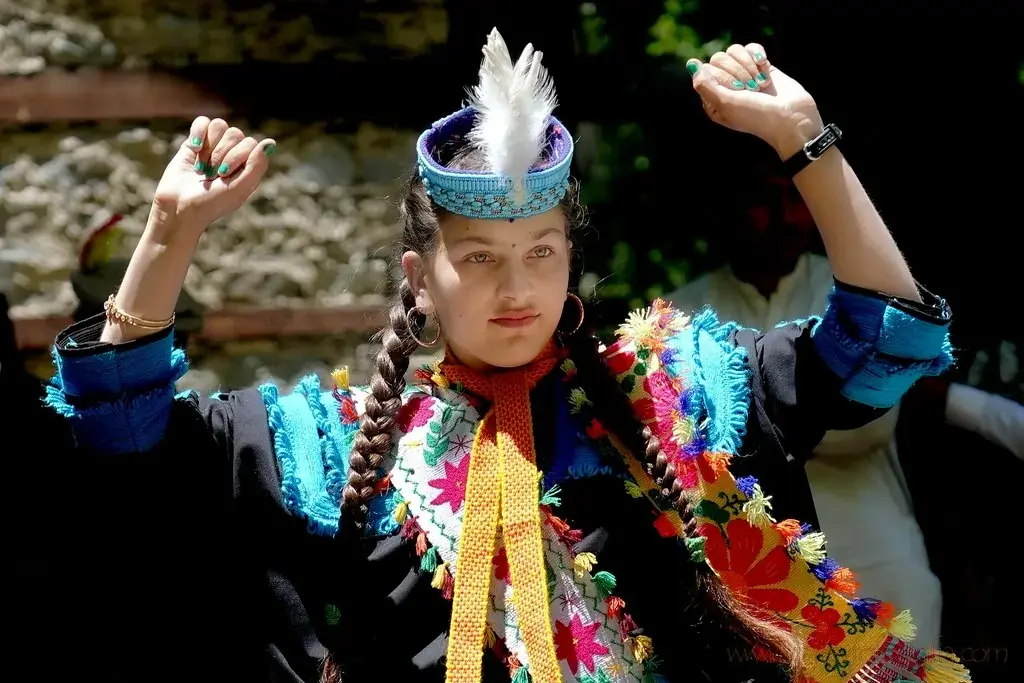
Kalash women’s clothing is elaborate, colorful, and functional for the mountainous terrain, emphasizing modesty while allowing mobility. It is worn daily and amplified during festivals like Joshi (spring), Chaomos (autumn), and Uchal (harvest). The “black” aspect (earning them the name “Black Kafirs”) refers to the dominant dark base color, contrasted with bright accents.
See also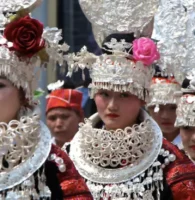 Miao Silver-Decorated Costume (China)
Miao Silver-Decorated Costume (China)Key elements:
- Dress (Gown or Robe): A long, ankle-length, loose-fitting black cotton or wool frock (called chugha or shoqa), reaching mid-calf to ankles. It is brightly embroidered with multicolored threads in floral, geometric, or cowrie shell patterns along the neckline, cuffs, hemline, and seams. Neon threads add modern vibrancy to traditional flower arrangements. The gown is practical for herding and farming but festive when layered.
- Headdress:
- Everyday: Shushut (or Khalpol/Topi): A pillbox-style woolen cap or small hat adorned with cowrie shells, beads, buttons, and embroidery. It sits atop braided hair (chui: five long plaits, one frontal and one extra-long at the back tied with a bell). This is a staple for villagers, unique to each wearer as women often design their own.
- Ceremonial: Kupas (or Kopas/Shushut): A magnificent fringe headdress for festivals, made of black wool strands (up to 2–3 meters long) hanging like a veil, decorated with cowrie shells, silver coins, beads, and bells that jingle during dances. It symbolizes maturity and is worn by unmarried girls and women; the fringe sways rhythmically in group dances.
- Belt (Gushut): A wide, handwoven woolen sash wrapped multiple times around the waist, often in black with embroidered edges. It secures the gown and can be up to several meters long, made from spun yarn.
- Accessories:
- Multiple necklaces (up to dozens) of beads, cowrie shells, coral, and silver, layered for a jingling effect.
- Long plaits (chui) woven with threads, bells, and shells.
- Handmade baskets or jewelry from vegetable fibers.
- Footwear: Simple leather sandals or woven grass shoes for daily use; none specified for formal wear.
During festivals, women layer gowns and add more ornaments, creating a symphony of colors and sounds. Menstruating or pregnant women retreat to the bashali (seclusion house), where purity rituals influence attire choices.
Men’s Traditional Attire
Kalash men have largely assimilated regional Muslim styles due to interactions with neighboring Pashtun and Chitrali communities, making their everyday dress indistinguishable from Pakistan’s national attire. Traditional elements persist in festivals or rural settings, reflecting a simpler, practical style suited to herding goats and farming in the valleys.
Key elements:
See also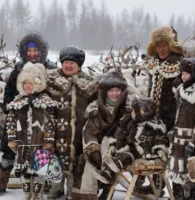 Yakut (Sakha) Winter Costume
Yakut (Sakha) Winter Costume- Everyday/Modern: Shalwar kameez (loose tunic and pants) in wool or cotton, often with a vest (waistcoat) for warmth. Paired with a pakol (woolen cap) or turban (patkai scarf). Mid-calf-length straight-legged woolen trousers (partug) with leggings in winter.
- Traditional/Festive:
- Robe (Chugha or Shoqa): A long woolen or cotton robe, similar to women’s but less embroidered, reaching knees or ankles. Worn over shalwar for layering in cold weather.
- Trousers and Shirt: Loose woolen pants (partug) with folds at the ankles, and a fitted shirt (khat or kamis) flaring at the waist.
- Headwear: Pakol hat or turban; during festivals like Chaomos, men may wear embroidered vests or adopt women’s styles in role-reversal rituals (e.g., Lawak Baik, where genders swap attire).
- Accessories: Woolen shawls, belts, and simple bead necklaces; less ornate than women’s.
- Footwear: Leather boots or sandals.
Men participate in dances wearing these, often with staffs or musical instruments like flutes.
Cultural and Social Significance
- Symbolism: Clothing embodies Kalash worldview—black represents the earth and purity, colors and shells ward off evil spirits, and embroidery honors nature deities (e.g., during sacrifices to gods like Balomain). Women’s attire signifies fertility and community roles; the jingling sounds invoke ancestral spirits.
- Festivals and Rituals: Attire peaks during Chaomos (honoring demi-gods with dances and bonfires), Joshi (spring renewal), and Uchal (harvest thanks). Cross-dressing occurs in playful rituals, blurring gender norms.
- Preservation Challenges: Surrounded by Islamic influences, many Kalash convert, diluting traditions. Tourism exploits culture (e.g., forced dances), but UNESCO recognition of Kalasha Valleys as a World Heritage site (tentative) aids preservation. Women-led weaving cooperatives promote textiles economically.
- Modern Influences: Younger generations blend traditions with jeans or synthetic fabrics, but core elements endure, especially for women.
The Kalash’s dress is a living tapestry of resilience, blending ancient roots with daily life in the Hindu Kush. For images or deeper dives into specific festivals, more details can be explored!

